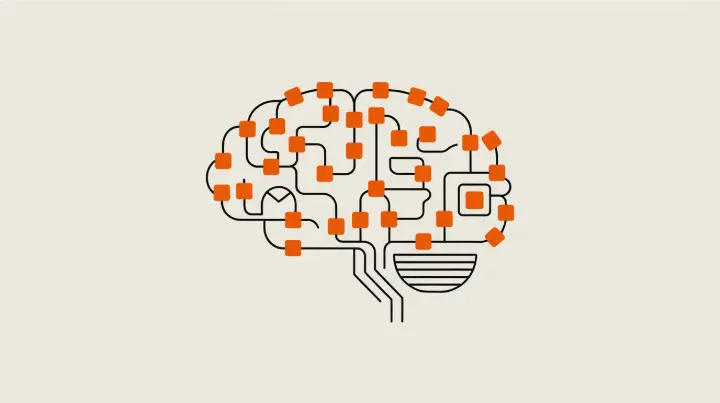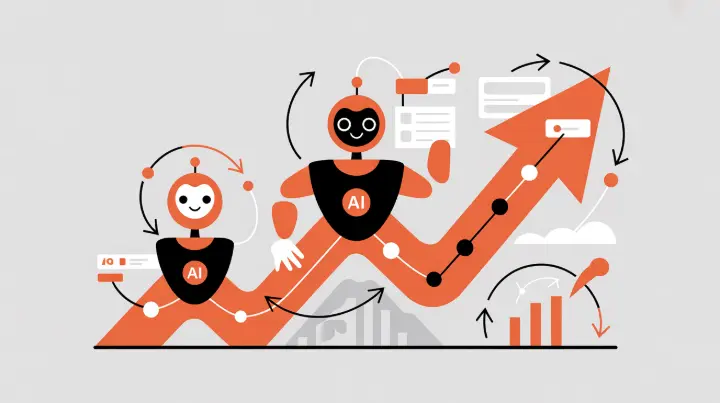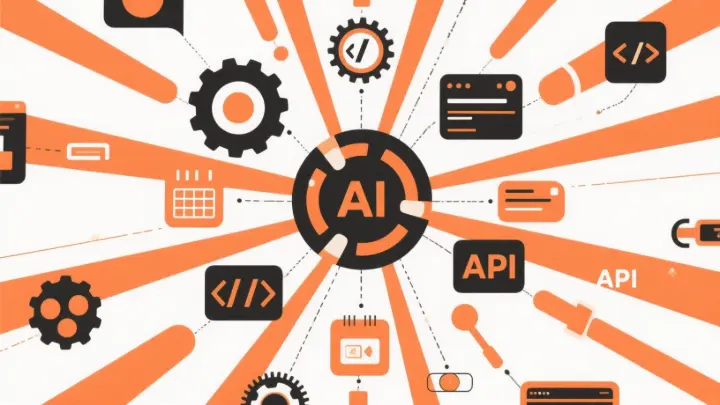Artificial Intelligence is no longer just a concept we experiment with. It's becoming an active participant in how we think, work, and create. 2025 marks a major shift in how AI operates: from static systems to intelligent agents that reason, collaborate, learn, and even take on physical or virtual forms.
These agents are not just tools. They're digital counterparts designed to understand context, make decisions, and carry out actions with increasing independence.
Whether they're analyzing legal documents, planning marketing campaigns, coordinating across teams, or representing us in virtual meetings, intelligent agents are transforming every layer of business and creativity.
To make sense of this evolution, we can group modern AI agents into five key types. Each plays a unique role in this new era of autonomy.
Reasoning Agents: The Strategic Thinkers
Reasoning agents represent the thinking layer of artificial intelligence. They don't just process information; they analyze it, weigh options, and make decisions based on logic and context.
Think of a legal AI that reviews thousands of case files, identifies relevant precedents, and suggests the strongest arguments for a case. Or consider a strategic planning system that analyzes market data, competitor movements, and internal resources to recommend the best business moves for the quarter.
These agents excel at tasks that require deep analysis and multi-step thinking. They break down complex problems into manageable pieces, evaluate potential outcomes, and choose the path that makes the most sense.
In healthcare, they assist doctors by analyzing symptoms and medical histories to suggest diagnoses. In finance, they assess risk factors and market trends to guide investment decisions.
What makes reasoning agents powerful is their ability to explain their thinking. They don't just give you an answer; they show you how they arrived at it. This transparency builds trust and allows humans to validate the logic before taking action.

Collaborative Agents: The Team Players
The future of AI isn't about a single superintelligent system. It's about multiple specialized agents working together like a well-coordinated team.
Collaborative agents operate in networks where each AI has a specific role and expertise. Imagine a content creation workflow where one agent handles research, another writes the draft, a third optimizes for SEO, and a fourth designs the visuals. Each agent focuses on what it does best, and the final output is far superior to what any single system could produce.
In software development, we're seeing agent teams where one AI writes code, another tests it, and a third reviews it for security vulnerabilities. In marketing, collaborative agents can plan campaigns, create content, schedule posts, and analyze performance metrics, all while staying aligned toward the same business goals.
This collaborative approach mirrors how human teams work. Just as you wouldn't expect one person to be an expert in everything, these agent networks distribute tasks based on specialization. The result is faster execution, higher quality output, and the ability to handle complex projects that require diverse skills.
![]()
Tool-Using Agents: The Action Takers
While some agents specialize in thinking or collaborating, tool-using agents are built to take action in the real world. They extend their capabilities by connecting with APIs, databases, software platforms, and digital tools.
These agents can book your calendar, send emails, run data analysis in spreadsheets, make purchases, schedule social media posts, or even control smart home devices. They bridge the gap between digital intelligence and practical execution.
Consider a customer service agent that not only answers questions but also processes refunds, updates shipping addresses, and creates support tickets in your CRM system.
Or think about a research assistant that searches databases, extracts relevant information, compiles reports, and emails them to your team, all without human intervention.
The power of tool-using agents lies in their integration capabilities. They understand how to interact with different systems and platforms, translating human intent into executable actions.
As more software offers API access, these agents become increasingly versatile and valuable for automating workflows.

Learning Agents: The Self-Improvers
Learning agents represent the adaptive layer of AI. They don't stay static. They continuously evolve through feedback, new data, and changing environments.
These agents observe patterns in how users interact with them and adjust their responses accordingly. A customer support agent might notice that certain types of questions are asked frequently and proactively improve its knowledge base.
A recommendation system learns from user behavior to suggest increasingly relevant content over time.
In manufacturing, learning agents optimize production processes by analyzing performance data and identifying efficiency improvements.
In education, they adapt teaching methods based on how students respond to different types of content and instruction.
What distinguishes learning agents is their ability to improve without explicit reprogramming. They use reinforcement learning, user feedback, and outcome analysis to refine their behavior.
This creates systems that become more effective the longer they operate, making them valuable long-term investments rather than static tools.
![]()
Embodied Agents: The Physical Presence
Embodied agents bring AI into the physical and immersive digital world. They exist as avatars, voice assistants, robots, or holographic projections, giving AI a tangible presence.
These agents appear in virtual meetings as digital representatives, greet customers in retail stores as humanoid robots, or assist in homes as voice-activated companions. They combine intelligence with a form factor that humans can interact with naturally.
In healthcare, embodied agents serve as robotic assistants that help with patient care. In education, they act as virtual tutors with expressive avatars that make learning more engaging.
In customer service, they appear as digital humans in video calls, providing a more personal touch than text-based interactions.
The importance of embodied agents goes beyond functionality. They make AI interactions feel more human and intuitive. People naturally respond better to systems that have a voice, face, or physical form. This embodiment creates emotional connections and makes complex technology more accessible to everyone.

The Future Is Collaborative Intelligence
Together, these five categories represent a shift from automation to true autonomy. They show how AI is moving closer to human-like understanding and teamwork, not to replace people but to enhance how we operate at scale.
The future of work, business, and creativity isn't about humans versus machines. It's about humans and intelligent agents working side by side, each doing what they do best. We bring creativity, intuition, empathy, and strategic vision. Agents bring speed, consistency, analytical power, and tireless execution.
As these technologies mature, the organizations and individuals who learn to collaborate effectively with intelligent agents will have a significant advantage. The question isn't whether to adopt these technologies, but how quickly you can integrate them into your workflows.
The age of intelligent agents has arrived. Understanding their capabilities and potential is the first step toward thriving in this new era.